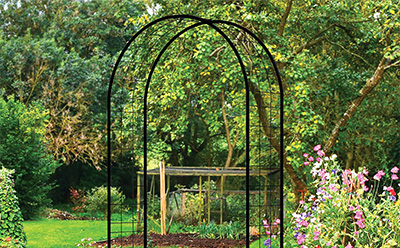welded wire fence
Dez . 16, 2024 00:17
Understanding Welded Wire Fences A Comprehensive Guide
Welded wire fences have become an increasingly popular choice for various applications, ranging from agricultural use to residential property demarcation. With their sturdy construction and versatility, these fences offer a myriad of benefits that make them an attractive option for homeowners and landowners alike.
What is a Welded Wire Fence?
A welded wire fence is composed of steel wire strands that are welded together at intersections, creating a grid pattern that provides strength and durability. Unlike traditional woven wire fences, which can unravel at their joints, welded wire fences offer superior integrity and resistance to wear and tear. This makes them ideal for high-traffic areas or environments where other types of fencing might deteriorate more quickly.
Benefits of Welded Wire Fences
1. Durability One of the primary advantages of welded wire fencing is its exceptional durability. The welding process creates a permanent bond between the wires, making the fence resistant to deformation from external forces. Furthermore, many welded wire fences are galvanized or coated with vinyl to prevent rusting and corrosion, extending their lifespan significantly.
2. Versatility Welded wire fences can serve a multitude of purposes. They are commonly used in agricultural settings to contain livestock and protect crops from wild animals. Additionally, homeowners often use them for garden enclosures or as dog runs. Their grid structure allows for visibility while still providing an effective barrier, making them suitable for residential use as well.
3. Cost-Effectiveness Compared to other types of fencing materials, welded wire fences present a cost-effective solution. The longevity of these fences means that property owners can save money over time by reducing the frequency of replacements and repairs. Moreover, installation is often straightforward, which can help save on labor costs.
4. Low Maintenance Once installed, welded wire fences require minimal maintenance. A simple wash with soapy water and a hose is usually enough to keep the fence looking fresh. For those living in harsher climates, regular inspections for rust spots or damage can further extend the life of the fence without requiring extensive upkeep.
welded wire fence

5. Environmental Friendliness Many welded wire fences are made of recycled materials, making them an eco-friendly choice for conscientious consumers. Additionally, since they can last for decades with proper care, they contribute to sustainable practices by reducing the need for frequent replacements.
Installation Process
Installing a welded wire fence is a manageable task that many homeowners can undertake themselves with the right tools and preparation. The process typically involves
1. Planning and Layout Determine the desired location and purpose of the fence. Measure the area and mark the corners with stakes.
2. Post Installation Dig holes for the fence posts, ensuring they are deep enough to provide stability. Set the posts in concrete for added durability.
3. Attaching the Mesh Unroll the welded wire mesh and attach it to the installed posts using staples or wire ties. Ensure that the mesh is pulled taut to prevent sagging.
4. Finishing Touches Check that the fence is level and secure. Add any gates or additional accessories as needed.
Conclusion
Welded wire fences offer a reliable and robust fencing solution for various applications. Their combination of durability, cost-effectiveness, and low maintenance makes them a preferred choice for many property owners. Whether you’re looking to protect your garden, contain livestock, or secure your property, a welded wire fence may just be the perfect solution that combines functionality with lasting beauty. By understanding the benefits and installation processes involved, you can make an informed decision that will serve your needs well into the future.




















